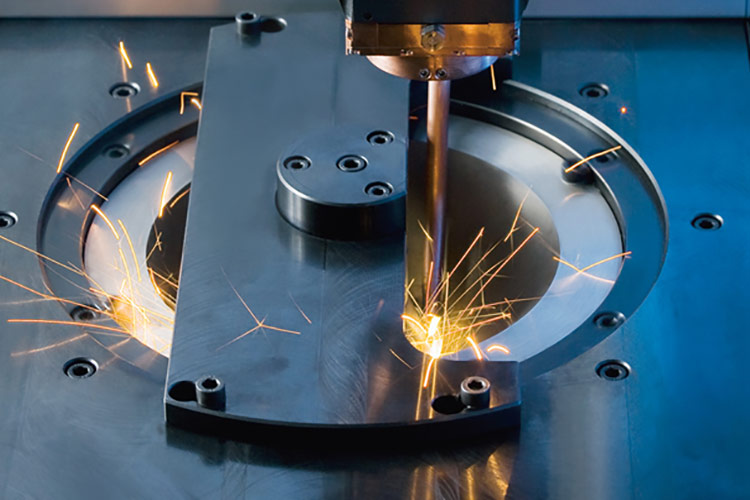In the automotive industry, one trend has been consistent for years: Passenger vehicle transmissions are becoming smaller and lighter, although the number of speeds—and of toothed gear components—continue to increase. How does the entire assembly not become heavier?. The answer becomes obvious by taking a closer look at the individual components. A gearwheel, for example, consists of two components that are joined by laser welding. This allows the design engineers to work without screws—allowing the component to become lighter.
Integrating the into the production system
The benefits listed above explain why laser welding has become a core process in transmission manufacturing. However, this method cannot easily be integrated into a complete production line: because the actual laser welding process is preceded and followed by many other processes. Depending on the component, these may include checking, washing, joining of components before laser welding, a brushing process and a final ultrasonic inspection of the welding seam.
EMAG developing multi-stage production solutions
“Implementing comprehensive production lines that integrate laser welding into the overall sequence—is the special expertise of EMAG Automation”, says Dr. Andreas Mootz, managing director of EMAG Automation. “We are very familiar with the production sequence for central transmission components. Therefore, we do not just design another laser welding machine. With our multi-stage production solutions, we focus on creating a perfect process chain that operatesquickly, and very safely.”
Every detail of these systems is perfectly tailored to the component by our specialists based in Heubach near Schwäbisch Gmünd, Germany. Inspection methods, as an example: EMAG Automation has developed its own ultrasonic inspection method. “The trend goes toward zero-defect production that ensures the quality of every single welding seam. We can guarantee it with this technology”, says Dr. Mootz.
ELC series—a success story in transmission manufacturing
Of course, the laser welding machine itself is perfectly configured as well. It is always a customized solution, based on the ELC series machines—each model being ideally suited for different types of components. For example, the ELC 160 HP machine is a special solution for gearwheels. On the other hand, the ELC 160 model provides an all-round solution for many automatic transmission and dual clutch components. Another major success factor is the cooperation between EMAG Automation and EMAG Maschinenfabrik in Salach. By combining their resources, they can implement the complete production sequence for transmission components—from welding to turning and grinding. “In this way, production planning has become so much easier. This is a huge benefit that is continually increasing its market recognition “, concludes Dr. Mootz.


